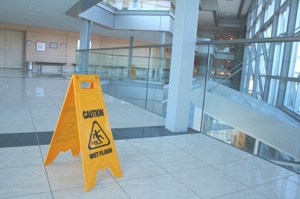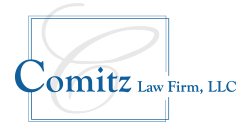 According to the Centers for Disease Control and Prevention (CDC), over one million Americans suffer a slip and fall or trip and fall accident. Over 17,000 people in the US die every year because of injuries related to falls. Slip/trip accidents are responsible for more than forty-five percent of traumatic brain injuries. Nursing home residents account for more than twenty percent of all deaths from fall accidents.
According to the Centers for Disease Control and Prevention (CDC), over one million Americans suffer a slip and fall or trip and fall accident. Over 17,000 people in the US die every year because of injuries related to falls. Slip/trip accidents are responsible for more than forty-five percent of traumatic brain injuries. Nursing home residents account for more than twenty percent of all deaths from fall accidents.
Slip and fall accidents result from a loss of traction caused by substances such as water, wax or ice. In this type of accident, the victim usually falls backwards.
Trip and fall accidents occur when a foot that is moving forward suddenly encounters an unexpected obstacle or resistance. As a result, the victim typically falls forward.
In this article we’ll take a closer look at trip and fall accidents.
Trip and Fall Injuries
These types of accidents tend to produce a distinct set of injuries which include:
Neck injuries
When falling, the arms are put out to break the impact. The head, however, continues to move towards the ground. This imparts force to the neck.
Traumatic head injuries
Although these serious injuries are more common in slip and fall accidents, they may result from a trip and fall accident. One such instance may be a trip that occurs on a stairwell.
Limb fractures
When a person falls forward, the arms are instinctively put out to break the fall. Limb fractures are often the result.
Foot injuries
Trip and fall accidents often lead to foot and ankle injuries. This is particularly the case when the foot gets caught as the person falls over.
Broken fingers
The hands tend to take the brunt of the force of impact in trip and fall accidents. So fall victims commonly experience broken finger bones.
Thumb injuries
Injuries involving the thumbs are common in trip and fall accidents. The force of the impact pushes the thumb backward behind the hand, resulting in damage to delicate tendons and ligaments.
Trip and Fall Scenarios
A number of conditions can result in trip and fall accidents, including:
- uneven or crumbling sidewalks
- items on the floor (e.g. fallen store merchandise)
- damaged, warped, buckled, or uneven flooring surfaces
- holes in carpets covering stairs
- potholes in a parking lot
- floor mats which curl up
The risk of tripping can be exacerbated by inadequate lighting and loose handrails.
Premises Liability
In Pennsylvania, property owners have a responsibility to provide visitors or residents of the property with a reasonably safe environment. Under the theory of premises liability, property owners or occupants can be held responsible for injuries and accidents that happen on the property.
What to Do After a Trip and Fall Accident
- Seek medical treatment
- Report the incident to the appropriate person
- Take photos if possible
- Look for nearby security cameras
- Collect witness information
- Avoid making any statements until you have spoken to a qualified personal injury lawyer
- Contact your attorney
If you’ve been injured in a trip and fall accident or slip and fall accident, call Comitz Law at 570-829-1111 or email info@comitzlaw.com. We can help.


